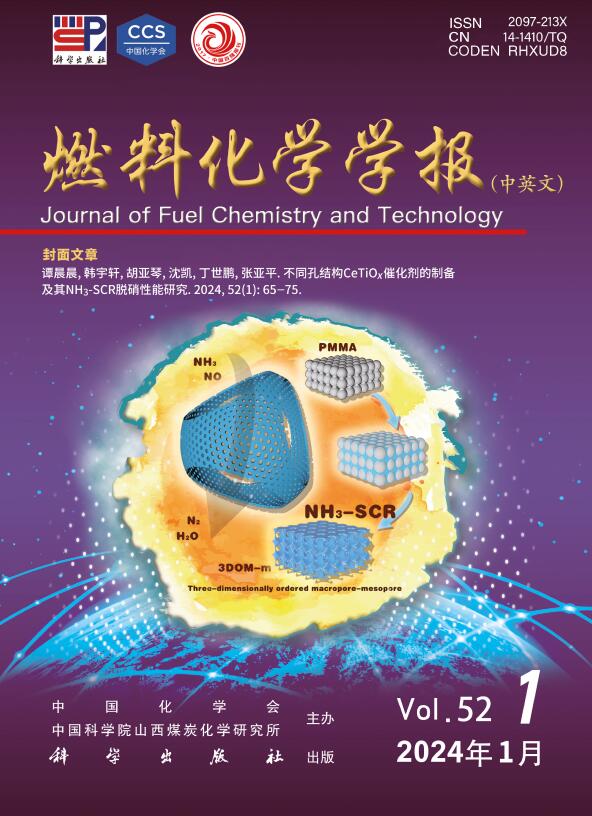High temperature shock synthesis of Ni-N-C single-atom catalysts for efficient CO2 electroreduction to CO
Q3 Energy
引用次数: 0
Abstract
Electrocatalytic reduction of carbon dioxide (CO2) to carbon monoxide (CO) is an effective strategy to achieve carbon neutrality. High selective and low-cost catalysts for the electrocatalytic reduction of CO2 have received increasing attention. In contrast to the conventional tube furnace method, the high-temperature shock (HTS) method enables ultra-fast thermal processing, superior atomic efficiency, and a streamlined synthesis protocol, offering a simplified method for the preparation of high-performance single-atom catalysts (SACs). The reports have shown that nickel-based SACs can be synthesized quickly and conveniently using the HTS method, making their application in CO2 reduction reactions (CO2RR) a viable and promising avenue for further exploration. In this study, the effect of heating temperature, metal loading and different nitrogen (N) sources on the catalyst morphology, coordination environment and electrocatalytic performance were investigated. Under optimal conditions, 0.05Ni-DCD-C-1050 showed excellent performance in reducing CO2 to CO, with CO selectivity close to 100% (−0.7 to −1.0 V vsRHE) and current density as high as 130 mA/cm2 (−1.1 V vsRHE) in a flow cell under alkaline environment.
高温冲击合成Ni-N-C单原子催化剂的高效CO2电还原成CO
电催化还原二氧化碳(CO2)为一氧化碳(CO)是实现碳中和的有效策略。高选择性、低成本的CO2电催化还原催化剂受到越来越多的关注。与传统的管式炉方法相比,高温冲击(HTS)方法具有超快的热加工、优越的原子效率和简化的合成方案,为制备高性能单原子催化剂(SACs)提供了一种简化的方法。这些研究结果表明,利用高温还原法可以快速、方便地合成镍基SACs,使其在CO2还原反应(CO2RR)中的应用成为进一步探索的可行和有前途的途径。本研究考察了加热温度、金属负载和不同氮源对催化剂形态、配位环境和电催化性能的影响。在最佳条件下,0.05Ni-DCD-C-1050在碱性流动电池中表现出优异的CO还原性能,CO选择性接近100%(−0.7 ~−1.0 V vsRHE),电流密度高达130 mA/cm2(−1.1 V vsRHE)。
本文章由计算机程序翻译,如有差异,请以英文原文为准。
求助全文
约1分钟内获得全文
求助全文
来源期刊

燃料化学学报
Chemical Engineering-Chemical Engineering (all)
CiteScore
2.80
自引率
0.00%
发文量
5825
期刊介绍:
Journal of Fuel Chemistry and Technology (Ranliao Huaxue Xuebao) is a Chinese Academy of Sciences(CAS) journal started in 1956, sponsored by the Chinese Chemical Society and the Institute of Coal Chemistry, Chinese Academy of Sciences(CAS). The journal is published bimonthly by Science Press in China and widely distributed in about 20 countries. Journal of Fuel Chemistry and Technology publishes reports of both basic and applied research in the chemistry and chemical engineering of many energy sources, including that involved in the nature, processing and utilization of coal, petroleum, oil shale, natural gas, biomass and synfuels, as well as related subjects of increasing interest such as C1 chemistry, pollutions control and new catalytic materials. Types of publications include original research articles, short communications, research notes and reviews. Both domestic and international contributors are welcome. Manuscripts written in Chinese or English will be accepted. Additional English titles, abstracts and key words should be included in Chinese manuscripts. All manuscripts are subject to critical review by the editorial committee, which is composed of about 10 foreign and 50 Chinese experts in fuel science. Journal of Fuel Chemistry and Technology has been a source of primary research work in fuel chemistry as a Chinese core scientific periodical.
 求助内容:
求助内容: 应助结果提醒方式:
应助结果提醒方式:


